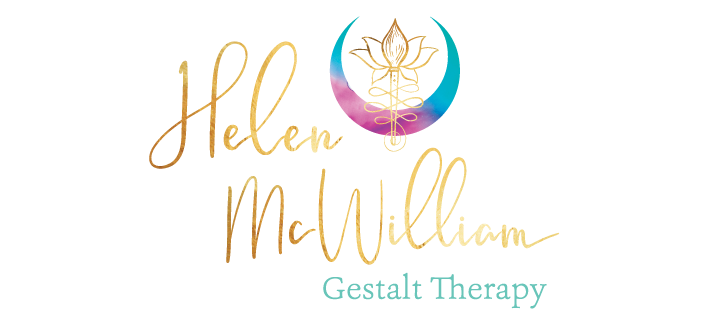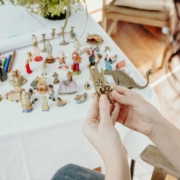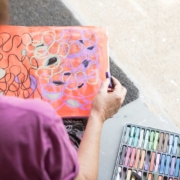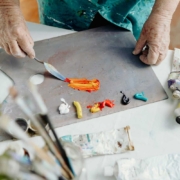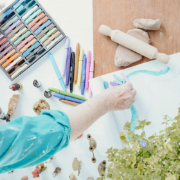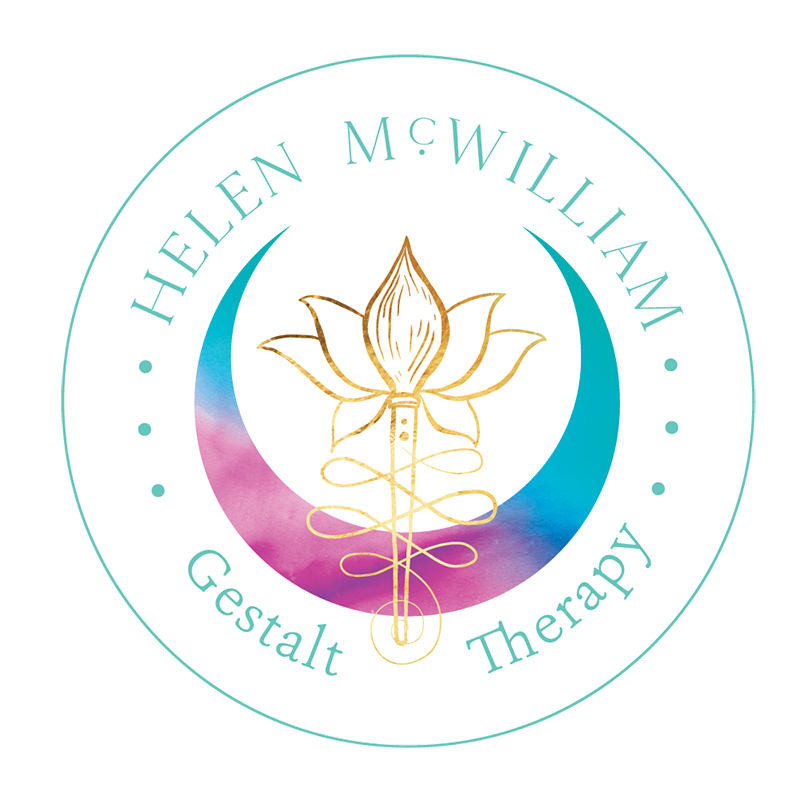‘Art is an extension of the self and can be a meaningful and powerful way to express what words cannot say.’
Art has accompanied humanity from the very beginning. Across time and culture, we have painted, danced, sculpted, sung, and used ritual to express our place in the world, connect with the sacred, and foster collective healing. While Western history once separated ‘fine art’ from craft and everyday creativity, the healing potential of the arts remains universal and enduring.
Gestalt Art Therapy brings this timeless human capacity into the therapy room. It combines the foundational principles of Gestalt therapy—presence, awareness, experimentation, and dialogue—with the transformative potential of art-making. Rooted in the present moment and the therapeutic relationship, this approach offers clients a dynamic path to explore, express, and integrate their lived experience.
Reclaiming Creativity
Clients often arrive in therapy saying, “I can’t draw,” or “I’m not creative.” These beliefs are usually the result of early wounding—perhaps a moment in childhood when their art was criticised, corrected, or dismissed. These moments can shape how someone sees themselves, leaving them cut off from the natural impulse to express and play.
In Gestalt Art Therapy, we gently challenge these narratives. Creativity is not about performance; it is about expression. Clients are invited to reclaim their right to create—not for approval, but for themselves.
Core Principles and Creative Expression
Gestalt therapy focuses on what is happening now. It values awareness, wholeness, and the unfolding of meaning through dialogue and experimentation. Art-making provides a direct way for clients to externalize and explore their inner world, whether that includes intrusive thoughts, painful memories, or anxiety about the future.
Creating art in therapy enhances self-awareness. Through the choice of materials, colours, shapes, and movement, clients begin to recognize patterns and parts of themselves that may have remained hidden. Artistic expression often brings to light aspects of the self that are hard to put into words—parts that may have been ignored, dismissed, or judged. With gentle support, clients begin to integrate these aspects and relate to them with curiosity and compassion.
Imagination is central. Art gives form to the inner landscape—emotions, fantasies, and dreams come alive on the page or through movement. In Gestalt Art Therapy, these expressions are not interpreted or analyzed in a rigid way. Instead, they are explored together by therapist and client, opening space for symbolic meaning, embodied feeling, and authentic self-discovery.
The Artwork as a Third Presence
In the therapy space, both the process of making art and the product itself matter. The artwork becomes a third presence in the room—something created by the client, yet also separate. It enriches the situation, enables new communication, and offers fresh perspectives. We do not judge it or ask, “What does it mean?”We explore it.
For example, as a client finishes a bold, chaotic image made with thick strokes of black pastel, they sit quietly, their hands still smudged with black dust. Their breathing slows, and they lean forward, gazing intently at the piece. The therapist notices how the client’s jaw relaxes and their feet press more firmly into the floor. Gently, the therapist asks, “What’s it like to look at this now?” The client might pause, sensing into their body, and say, “It’s strange… I feel more solid, like I’m standing on my own ground.” In this shared space, the artwork is not just an object; it is a living expression that helps bridge inner sensations and emerging awareness, inviting both therapist and client into a deeper dialogue with what has been held inside.
How does it affect us? What happens when we see it as an entity with its own voice? What might it say if it could speak? We may give it a title, or respond to it with a gesture, a poem, a movement, or another image. This dialogue between client, therapist, and artwork deepens the therapeutic field and invites a richer encounter with self.
Experimentation Through Creative Media
A hallmark of Gestalt therapy is the use of experiments—creative, experiential ways to try out new behaviours or perspectives. Art-making itself is a form of experiment. Clients can use drawing, painting, collage, clay, or found objects to explore a situation, clarify confusion, or imagine alternative possibilities.
The therapist may invite the client to work freely or may suggest focused tasks—like drawing a relationship dynamic, a dream, or an emotional state. These visual metaphors bypass cognitive defences and tap into embodied, intuitive knowing. As the client creates, they often discover new insights or notice shifts in feeling and energy.
After creating, the therapist may ask questions like:
- “What do you see here?”
- “What part of this feels familiar?”
- “If this shape or colour could speak, what might it say?”
Through this shared inquiry, art becomes a bridge to deeper understanding.
Safety, Expression, and the Power of Process
Art-making in therapy is not about talent or aesthetics. No prior art experience is needed. It is the process—not the product—that matters.
For many clients, especially those dealing with trauma, grief, or anxiety, creative work can provide grounding and containment. It supports emotional regulation, allowing clients to externalize difficult feelings in a way that feels safer and more manageable. Art can distract from rumination, clarify complex inner experiences, and help reconnect fragmented parts of the self.
The body holds memories of trauma. Often, in order to feel safe or accepted, we learn to conform to what is expected of us—for example, by staying calm and composed. But what happens to the raw sensations of feeling threatened? Our fight-or-flight response? The body’s need to tremble, flee, or push back? These energies can remain stuck in the body, unexpressed.
Art-making offers a safe way to explore these embodied sensations. Using finger paint, rhythmic mark-making, or large gestural movements, clients can begin to express long-held fears, anger, or the impulse to run or strike out. These creative acts help bring awareness to the inner world of sensations, feelings, and needs—and what is being called for in life now.
Art can also be playful, joyful, and life-affirming—a source of vitality in the therapy space. Clients often report feeling more whole, expressive, and connected after engaging in art.
Conclusion: Creativity as a Gateway to Healing
Gestalt Art Therapy harnesses the healing potential of creativity, imagination, and presence. By integrating Gestalt principles with artistic process, it provides a powerful way for clients to explore themselves more fully and reconnect with their inner vitality.
Whether expressing the unspeakable, making sense of the confusing, or celebrating the beauty of simply being alive, art becomes a trusted companion on the therapeutic journey. Through it, clients find new ways of seeing, feeling, and being in the world.
References
Ebrecht, H. & Atkinson, S. (2014). Presence and process in Expressive Arts work.
Elbrecht, C. (2019). Healing Trauma with Guided Drawing.
Mackewn, J. (1997). Developing Gestalt counselling. Sage, London: Sage Press.
Oaklander, V. (2007). Windows to Our Children. The Gestalt Journal Press: Maine.
Shakhova, O. & Mavinushkina, A. (2023) Artistic creativity as a resource in psychological support group of Kharkiv Institute of Gestalt Psychodrama during wartime. British Gestalt Journal 3 (2).
Zinker, J. (1978). Creative process in Gestalt therapy. Vintage Books: New York.
